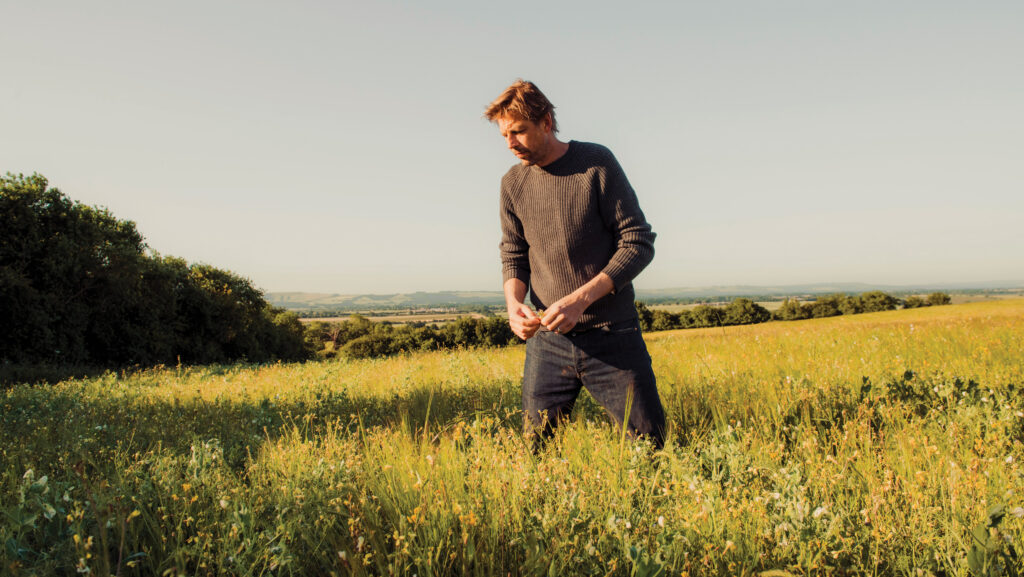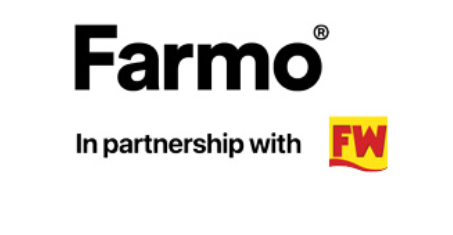Wildfarmed expands into oats and barley markets
 Andy Cato © Wildfarmed
Andy Cato © Wildfarmed Regenerative supply chain brand Wildfarmed has become a formidable force in the UK, with 150 farmers supplying more than 1,000 retail customers, ranging from micro-bakeries to large food businesses.
While wheat has been the foundation, Wildfarmed is now expanding into milling oats and malting barley, bringing more farmers and food businesses into the fold.
At the heart of Wildfarmed’s mission is a fully traceable, regenerative supply chain based on robust farming standards.
Co-founded by DJ and farmer Andy Cato, alongside two colleagues, it has the goal of creating a resilient agricultural system which links farmers, consumers and quality produce.
See also: How Wilts estate’s ‘practical regen’ approach supports yields
Strong demand
Wildfarmed has gone on to create its own line of flour and bread, selling direct to both independent retailers and high street giants.
After launching in Waitrose last year, Wildfarmed has now struck a deal with Tesco, and is supplying other high street names including M&S and Nando’s.
The product range includes sliced loaves, sourdoughs and various flours, each made with wheat grown according to the companies set of regenerative principles.
“A lot has changed in the past year,” says Andy.
“I’ve spent more time in a suit than in the previous 30 years. Whether it’s the business case for resilience, the consumer case for health, or nature-rich food production being the key to combining 2030 legally binding species recovery targets with food security, the audience for these messages is growing all the time.
“I think it’s critical to have a direct link between consumers and farmers. Even in our tiny corner of the food system, we are showing when you reconnect farmers and food buyers, it unlocks a collaborative effort that can make a real difference.”
Biodiversity boost
One of Wildfarmed’s most impactful collaborations has been with Bristol University, which has been measuring biodiversity on Wildfarmed vs non-Wildfarmed fields.
In just one year, fields following Wildfarmed’s regenerative protocols showed:
- An 80% increase in total insect biomass
- 3.7 times more bees.
“These results prove we don’t have to choose between food production and biodiversity,” says Andy.
“We can do both – and we can measure it. What we can measure, we can value, as we’ve seen with the water company premiums now being paid to Wildfarmed growers.
“Measured and valued outcomes are how we can scale this approach.”
Andy notes with frustration: “It’s mad that food producing land isn’t eligible for most of the public funding for nature. We know that food and nature must go hand-in-hand.”
The data speaks for itself, he says.
The traceable farm story and evidence to showcase the work farmers are doing in terms of beneficial nature, carbon and water outcomes is something food retailers and businesses are very much on board with.
“We’ve spent thousands of hours working with food businesses large and small to demonstrate how their procurement budgets can change landscapes and farmer livelihoods,” he notes.
Expanding the traceable supply chain into milling oats and malting barley is the logical next step to give farmers and businesses more options.
The standards
The current Wildfarmed approach is underpinned by a robust set of farming standards, rooted in soil health, biodiversity and nutrient management.
“We are constantly researching different approaches, something I’ve been doing ever since I began growing 17 years ago,” says Andy.
“Excitingly, now we can measure nature, water, soil outcomes and grain quality, we can trial different ways for farmers to get there.”
The requirements include:
- Insecticides, herbicides and fungicides are not permitted to be applied to the growing crop
- Winter wheat to receive no more than 120kg N/ha and spring wheat 80kg N/ha. This must be applied in maximum doses of 40kg N/ha (with an additional 20kg/ha of foliar N if required)
- Targeted nutrition must be based on plant needs. This is to be carried out through sap testing to ensure crops are nutritionally balanced
- Cereals must be grown alongside companion crops – either bi- or poly-cropping. This tends to be a legume such as beans with wheat or peas with barley. Or an infield nature strip can be planted
- Spring cereals must be preceded by a species-rich cover crop or diverse pasture mixes to keep soil covered at all times
- Livestock should be integrated wherever possible
- Milling wheat protein of 11.5%. For harvest last year, 70% of winter wheat growers met this requirement and 90% of spring wheat growers.
Close relationships
The brand is working closely with growers across entire crop rotations, providing agronomic advice, community events and tailored support.
An agreed price is set before the crops are planted.
Andy has previously worked closely with Defra in order to develop the AHW10 low-input harvested cereal crop option under the Sustainable Farming Incentive.
He hopes the government will finally see regenerative farming as one of the best investments for delivering on national goals for carbon, water, and biodiversity.
“We need to move past the language of subsidies and show the government that investing in nature-rich food production offers a fantastic return on investment.
“Resilience to floods and drought, health, nature recovery – all begins with how we farm.” he says.
Collaborative effort
Andy knows all too well that the key to long-term change lies in public engagement, which is why bridging the gap between field and plate is so important to him.
“We are a society divorced from its food system,” he says. “We need to collaborate in order to overcome this. We are showing that you can make a difference.
“If we want consumers to engage, we need to give them agency in their food choices, to know who grew their food and how. Give nature half a chance and it comes roaring back.
“Our message to farmers and consumers is that together we can make it happen.”

